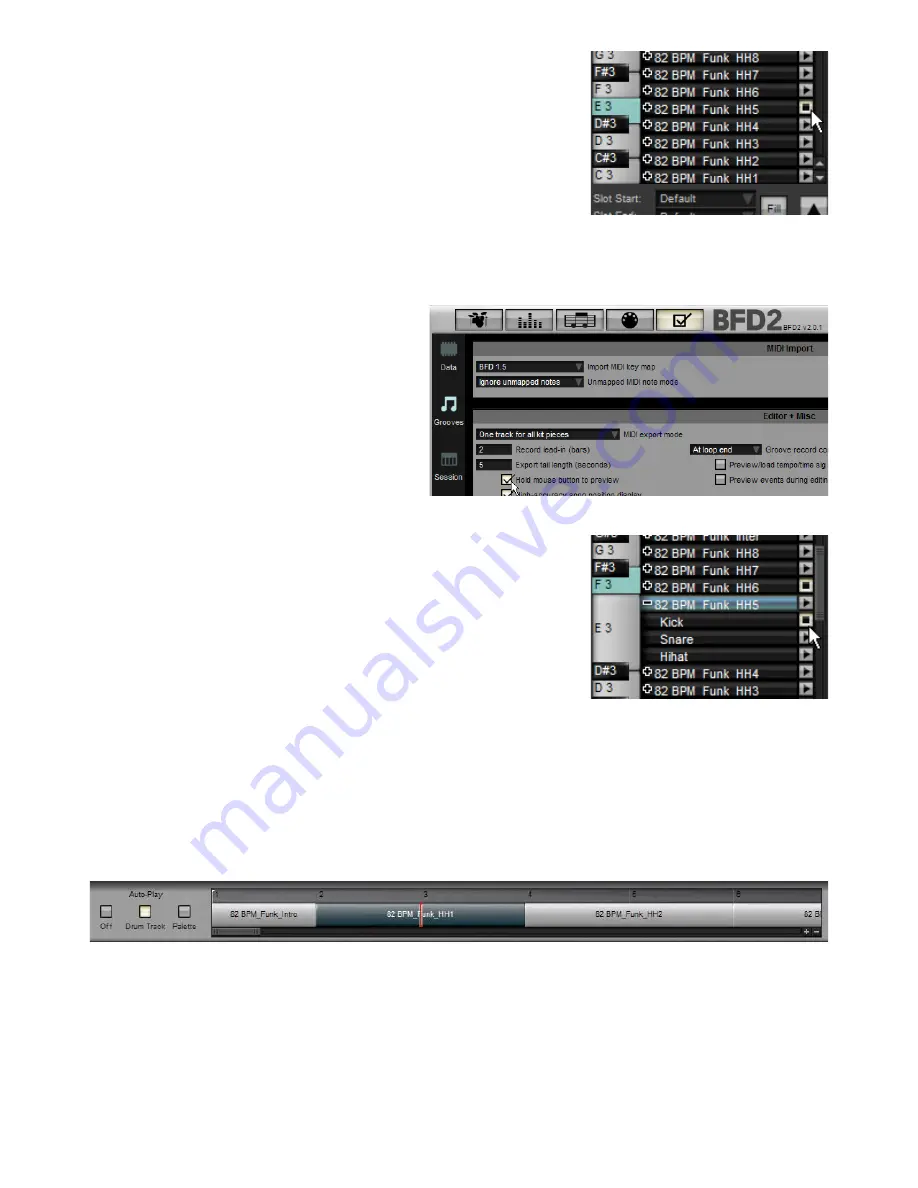
Triggering Grooves with Preview buttons
The playback indicators on the right of each slot in the Palette double as preview but-
tons. Clicking a slot’s preview button plays the Groove contained in the slot.
When previewing, playback follows the behaviour defined by Groove Actions. See
section 5:6 for more details of Groove Actions.
Click another slot’s Preview button in order to change to that slot’s Groove. The
method of transition is dictated by the Default and Slot Start Actions.
If Polyphonic mode is enabled, clicking another slot’s Preview button plays its Groove
at the same time as the current Groove.
Stopping previews
Each Groove can be stopped by clicking its respective Preview button again.
You can also use the Stop or Panic buttons in the BFD2 transport to stop playback of all currently playing Grooves.
Preview mouse behaviour
Enabling the Hold mouse button to preview setting in
the BFD2 Grooves preferences results in preview play-
back being active only while the mouse button is held
down on a Preview button. The end result is that it works
in the same way as holding down a MIDI key to play
Grooves, without Latching mode enabled.
It is not possible to preview Grooves polyphonically
using this setting, as it is only possible to click only one
preview button at a time.
By default, the Preview buttons’ behaviour is similar to
Latching mode when using MIDI triggering: the button is
clicked once to enable playback, and again to stop it.
Previewing individual elements of one Groove over another
You can ‘expand’ each Groove in the Palette to show its kit-piece elements as indi-
vidual ‘Groove elements’ in the Palette, by clicking the expand/collapse button to its
left.
These kit-piece Groove elements have their own preview buttons, so they can
replace the corresponding element in a Groove that is already playing. For example,
with a Groove already playing, you can replace its snares with the snare line from
another Groove. Note that using this function always results in replacing the kit-piece
element of the current Groove – it is never overlaid, even when Polyphonic mode is
enabled.
Click the expand/collapse button again to collapse the Groove to its normal state.
Expanded kit-piece elements are also used in replacing or merging parts in the cur-
rently edited Groove with those from others. This feature is covered in section 6:5.
Auto-Play and transport controls
By enabling the Auto-Play function, further ways of playing Grooves are possible. You can set a certain Groove, a random Groove
or the currently selected Groove to play when your host sequencer starts, Alternatively, BFD2’s transport controls replace the
host transport when the host is stopped, or when using the BFD2 standalone application.
Auto-Play also lets you use the Drum Track feature, which allows you to lay out a full drum performance by sequencing Grooves
from the Palette.
See chapter 7 for further details on the Auto-Play functions.
Please note that, as long as Polyphonic mode is enabled in the BFD2 Session preferences, you can still trigger additional
Grooves manually via MIDI over the top of Grooves triggered via Auto-Play.
Here, the BPM Funk HH
Groove is playing with the snare
element from the HH Groove.






























